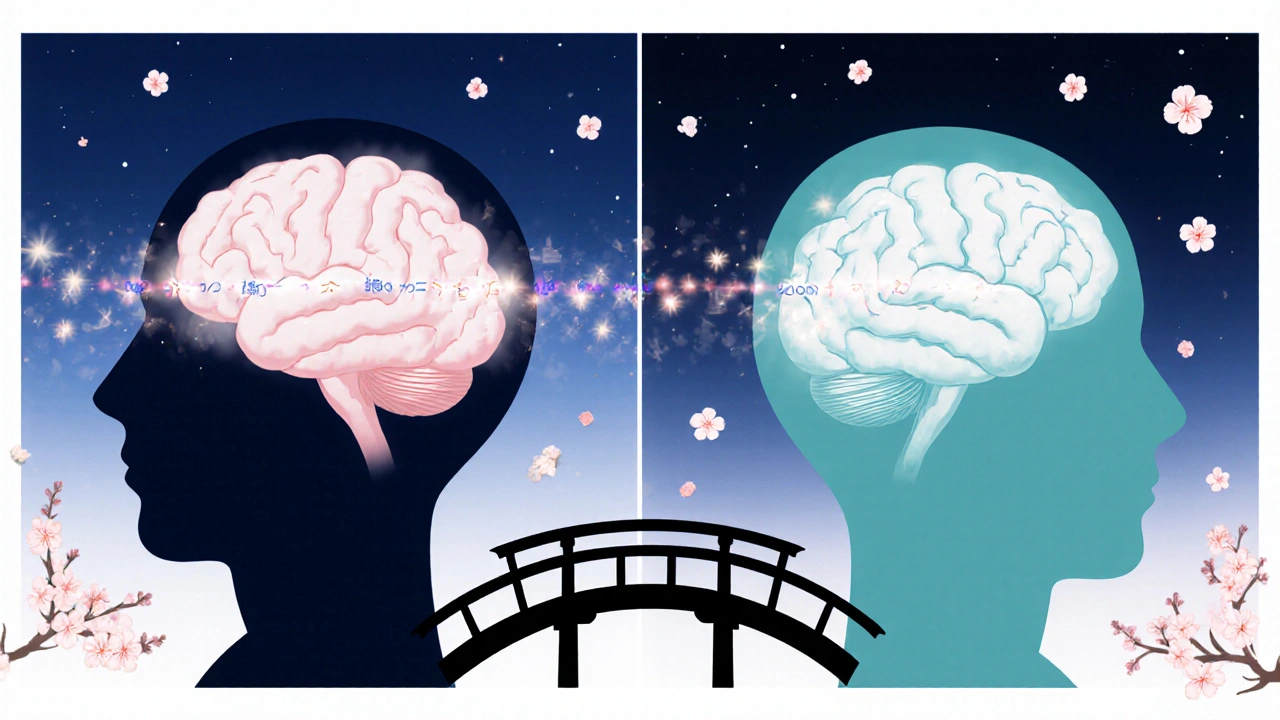Doxylamine Succinate vs Other Sleep Aids: Benefits, Risks & Top Alternatives

Why Doxylamine Succinate Shows up in Sleep‑Aid Discussions
When it comes to over‑the‑counter sleep aids, Doxylamine succinate is a first‑generation antihistamine that’s commonly used to treat occasional insomnia. It blocks histamine receptors in the brain, producing a drowsy feeling that can last 6‑8 hours. Because it’s sold under brand names like Unisom, many people reach for it without a prescription, assuming it’s harmless because it’s “just an antihistamine.” The reality is more nuanced-its sedative effect comes with a specific side‑effect profile, and several OTC or prescription alternatives may suit different sleep problems better.
How Doxylamine Succinate Works Compared to Other Antihistamines
Unlike second‑generation antihistamines that stay out of the brain, Doxylamine crosses the blood‑brain barrier and binds strongly to H1 receptors. This is why it’s more sedating than, say, loratadine. For a quick comparison, consider the older cousin Diphenhydramine.
Diphenhydramine (the active ingredient in Benadryl) works the same way-blocking H1 receptors-but its half‑life is shorter, leading to a quicker “crash” the next morning for many users. Both drugs can cause dry mouth, constipation, and next‑day grogginess, yet Doxylamine’s longer half‑life (about 10 hours) often makes it a better fit for people who need a full night’s rest.
Safety, Side Effects & Contraindications
Even though Doxylamine is available without a prescription, it isn’t risk‑free. The most common side effects are:
- Dry mouth and throat
- Dizziness or light‑headedness
- Blurred vision
- Potential next‑day sedation, especially for doses >25 mg
People with glaucoma, enlarged prostate, or severe asthma should avoid it, as anticholinergic properties can worsen these conditions. Elderly users are especially vulnerable to confusion and falls, so a lower dose or a different class of sleep aid may be safer.

Popular Alternatives and When They Shine
Below is a snapshot of the most common alternatives, each with its own strength and weakness.
Melatonin is a hormone naturally released by the pineal gland. Supplemental melatonin (usually 0.5‑5 mg) helps reset the circadian clock, making it ideal for jet lag or shift‑work sleep disturbances. Unlike antihistamines, it doesn’t cause anticholinergic side effects, but it may be less effective for people whose insomnia isn’t tied to a clock mis‑alignment.
Valerian root is an herbal extract used for mild anxiety and sleep initiation. Clinical trials show modest improvements in sleep latency, but the taste can be off‑putting and the evidence isn’t as robust as for synthetic drugs.
Zolpidem (brand name Ambien) is a prescription hypnotic that selectively binds to the GABA‑A receptor, producing rapid sleep onset with less next‑day hangover when used at the lowest dose (5 mg). It’s powerful, so it carries a risk of dependence and complex sleep‑walking behaviors.
Temazepam (Restoril) belongs to the benzodiazepine class. It’s effective for people who have trouble staying asleep, but long‑term use leads to tolerance, withdrawal symptoms, and higher fall risk in seniors.
Trazodone started as an antidepressant but is often prescribed off‑label for insomnia because of its sedating properties at low doses (25‑50 mg). It usually causes less next‑day grogginess than antihistamines, yet it can lead to vivid dreams or priapism in rare cases.
Side‑by‑Side Comparison Table
| Sleep Aid | Drug Class | Typical OTC Dose | Onset (minutes) | Half‑Life (hours) | Common Side Effects | Prescription Needed? |
|---|---|---|---|---|---|---|
| Doxylamine succinate | First‑gen antihistamine | 25 mg | 30‑60 | ~10 | Dry mouth, next‑day drowsiness | No |
| Diphenhydramine | First‑gen antihistamine | 25‑50 mg | 30‑45 | ~8 | Anticholinergic, morning grogginess | No |
| Melatonin | Hormone supplement | 0.5‑5 mg | 15‑30 | 0.5‑2 | Headache, dizziness | No |
| Zolpidem | Non‑benzodiazepine hypnotic | 5‑10 mg (Rx) | 15‑30 | 2‑3 | Sleep‑walking, dependence | Yes |
| Temazepam | Benzodiazepine | 7.5‑15 mg (Rx) | 30‑45 | 10‑20 | Tolerance, withdrawal | Yes |
| Trazodone | Serotonin antagonist | 25‑50 mg (Rx) | 30‑60 | 3‑9 | Vivid dreams, priapism | Yes |
How to Choose the Right Option for Your Situation
Think of sleep aid selection as matching a tool to a specific problem.
- Short‑term, occasional insomnia after a big event? Doxylamine or Diphenhydramine work well because you only need one‑time use.
- Difficulty falling asleep due to shift work or jet lag? Melatonin’s circadian‑resetting action is usually the first line.
- Waking up multiple times during the night? A prescription hypnotic like Zolpidem or Temazepam may be needed, but only under doctor supervision.
- Concerned about anticholinergic load (dry mouth, urinary retention)? Choose melatonin, valerian, or low‑dose trazodone instead of Doxylamine.
- Older adult with fall risk? Avoid Doxylamine and benzodiazepines; melatonin or a very low dose of trazodone may be safer.
Always discuss chronic insomnia with a healthcare professional before committing to daily use of any OTC sleep aid.

Quick Checklist Before You Reach for the Bottle
- Is this a one‑night issue or a recurring problem?
- Do you have any medical conditions that clash with anticholinergic meds?
- Are you taking other sedating drugs or alcohol?
- Will you need to be alert the next morning (e.g., work, drive)?
- Have you tried non‑medication strategies (sleep hygiene, CBT‑I) first?
Answering these questions can prevent unnecessary side effects and guide you toward the safest, most effective option.
Frequently Asked Questions
Can I combine Doxylamine with alcohol?
No. Mixing Doxylamine and alcohol amplifies sedation, impairs coordination, and raises the risk of respiratory depression. It’s safest to avoid alcohol entirely on nights you plan to use any antihistamine sleep aid.
How long can I safely take Doxylamine?
Guidelines recommend using it for no more than two weeks without a doctor’s approval. Prolonged use can lead to tolerance, daytime drowsiness, and anticholinergic buildup.
Is Doxylamine safe for children?
It is generally not advised for kids under 12. The FDA limits antihistamine sleep aid dosing for children because of the higher risk of severe side effects.
What makes melatonin different from Doxylamine?
Melatonin mimics a natural hormone that tells your body it’s time to sleep, while Doxylamine forces sleep by blocking histamine receptors. Melatonin typically has fewer anticholinergic side effects and is better for circadian‑related sleep problems.
Can I use Doxylamine every night?
Regular nightly use is discouraged. Tolerance builds quickly, and chronic anticholinergic exposure has been linked to cognitive decline in older adults.
Bottom Line: Tailor the Choice to Your Needs
There’s no one‑size‑fits‑all sleep aid. Doxylamine succinate shines as a cheap, readily available option for occasional insomnia, but it carries anticholinergic baggage that makes other choices-like melatonin for rhythm issues or a prescription hypnotic for chronic trouble-worth considering. Use the comparison table and checklist above to match the drug’s profile to your specific sleep challenge, and always loop in a clinician if you’re unsure.

Wesley Humble
October 20, 2025 AT 22:04From a pharmacodynamic perspective, Doxylamine succinate exhibits a pronounced anticholinergic load, which, in my assessment, outweighs its sedative convenience for most patients. The sedative effect, while robust, is accompanied by xerostomia, orthostatic hypotension, and a measurable cognitive decrement extending into the following morning. Moreover, the drug’s half‑life of approximately ten hours implies residual central nervous system activity, particularly problematic in geriatric cohorts. Consequently, I advise clinicians to prioritize agents with a more favorable safety margin when treating chronic insomnia. 😊
barnabas jacob
October 30, 2025 AT 04:24Look, the moral calculus here is simple: pushing cheap OTC antihistamines like Doxylamine on vulnerable popluation is practically a public health malpractice. U need to consider the anticholinergic burden & the risk of cognitive decline – especially in elders. The pharmas must be held accountable, not just the consumers who are misled by marketing hype.
jessie cole
November 8, 2025 AT 10:44Friends, I want to commend anyone who takes the time to read through this thorough comparison. Understanding the nuanced differences between agents empowers you to make a smarter, safer choice for your nightly rest. If occasional insomnia strikes, Doxylamine can be a helpful short‑term tool, but always pair it with good sleep hygiene practices. Remember, the goal is restorative sleep, not just the number of hours logged. Stay vigilant and take care of your health.
Matthew Hall
November 17, 2025 AT 17:04They’re hiding the real cure in plain sight.
Vijaypal Yadav
November 26, 2025 AT 23:24Scientifically speaking, Doxylamine’s antagonism of H1 receptors results in a cascade of downstream effects, including diminished cholinergic transmission. This mechanistic pathway explains the classic anticholinergic side‑effects such as dry mouth and urinary retention. In contrast, melatonin acts on MT1/MT2 receptors to regulate circadian rhythms without significant peripheral anticholinergic activity. For patients with pre‑existing glaucoma or prostatic hypertrophy, the latter is inherently safer.